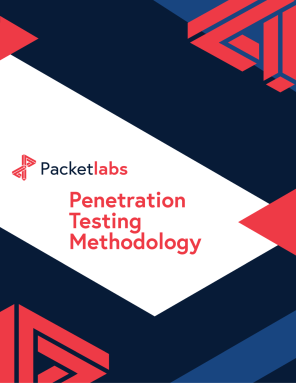SesameOp: A New Backdoor Exploit For OpenAI API
Would you like to learn more?
Download our Pentest Sourcing Guide to learn everything you need to know to successfully plan, scope, and execute your penetration testing projects.
Have you heard of the key OpenAI API being exploited to launch cyberattacks?
To be able to operate, malware requires a way to communicate with its command and control (C2) server, which is one of the usual ways cybersecurity researchers identify malware: by looking at suspicious communications.
Recently, however, security researchers from Microsoft have discovered a new piece of malware that uses a creative way of hiding this dialogue, abusing OpenAI’s Assistants API: a programming interface that lets developers integrate OpenAI’s AI “assistant” capabilities into their own applications, products, or services.
"Instead of relying on more traditional methods, the threat actor behind this backdoor abuses OpenAI as a C2 channel as a way to stealthily communicate and orchestrate malicious activities within the compromised environment," the Microsoft Incident Response team said in their recent report. "To do this, a component of the backdoor uses the OpenAI Assistants API as a storage or relay mechanism to fetch commands, which the malware then runs."
What to Know About the SesameOp OpenAI API Exploitation
The malware is named SesameOp, and was first discovered in July 2025. It grants threat actors persistent access to the compromised environment, as well as usual backdoor capabilities. All of the information grabbed in the attacks is then encrypted and shipped back through the same API channel.
It is also worth emphasizing that this is not a vulnerability in OpenAI’s platform, but rather a built-in capability of the Assistants API. According to an overview first published by BleepingComputer, the API itself is scheduled for deprecation in August 2026.
"The stealthy nature of SesameOp is consistent with the objective of the attack, which was determined to be long-term persistence for espionage-type purposes," Microsoft adds in their report.
Those worried about potential SesameOp malware attacks should audit their firewall logs, enable tamper protection, configure endpoint detection in block mode, and monitor for unauthorized connections to external services.
The Benefits of Continuous API Testing
This key OpenAI API exploit reaffirms the importance of continuous API Penetration Testing.
Implementing rigorous API testing practices can:
Fortify APIs and applications: API testing helps developers to build, deliver, and maintain stable, reliable applications.
Improve mean time to repair (MTTR): API testing helps DevOps teams identify and address API problems early in the software lifecycle and before they impact users.
Fast-track feedback: API testing tools interact directly with application logic, so validation happens quickly, and developers get feedback faster.
Strengthen API security: API testing helps teams find vulnerabilities (weak authentication protocols, for instance) and fill security gaps before bad actors can exploit them.
Accelerate software development cycles: API testing tools accelerate feedback cycles, enabling faster software iteration, simpler debugging, and continuous improvement. These features help businesses enhance CI/CD pipelines and sustain agile development practices.
Simplify test maintenance: Because APIs don’t change frequently (unlike user interfaces, which change based on when and how users access them), API tests don’t need frequent updates or maintenance to remain effective.
Expand test coverage: Testing applications at the API layer provides broader test coverage than UI tests, which can miss backend application issues.
Conclusion
Teams should stay alert for attackers exploiting the soon-to-be sunsetted OpenAI’s Assistants API, and take measures to proactively fortify against related potential threats.
Looking to take the next steps towards API Penetration Testing? Contact us today.
Contact Us
Speak with an Account Executive
Interested in Pentesting?

Penetration Testing Methodology
Our Penetration Security Testing methodology is derived from the SANS Pentest Methodology, the MITRE ATT&CK framework, and the NIST SP800-115 to uncover security gaps.
Download Methodology
Pentest Sourcing Guide
Download our Pentest Sourcing Guide to learn everything you need to know to successfully plan, scope, and execute your penetration testing projects.
Download GuideExplore in-depth resources from our ethical hackers to assist you and your team’s cyber-related decisions.

September 13 - Blog
Why Multi-Factor Authentication is Not Enough
Knowing is half the battle, and the use and abuse of common frameworks shed insight into what defenders need to do to build defense in depth.

November 19 - Blog
The Top Cybersecurity Statistics for 2024
The top cybersecurity statistics for 2024 can help inform your organization's security strategies for 2025 and beyond. Learn more today.

October 24 - Blog
Packetlabs at SecTor 2024
Packetlabs is thrilled to have been a part of SecTor 2024. Learn more about our top takeaway's from this year's Black Hat event.







